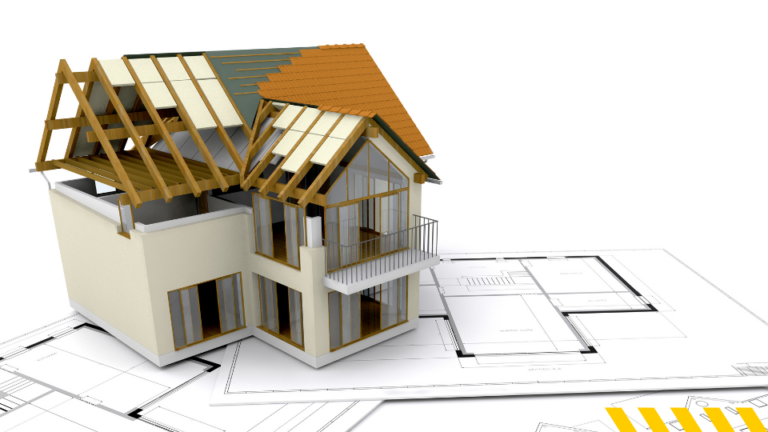You know how crucial accurate estimating is. If you are planning to build your own home or have ever been in a construction project, then you know. Estimating is the process of predicting the cost and amount of resources needed.
It is for a residential construction project. An estimated budget helps you plan and execute your project well. It lets you avoid financial pitfalls by considering materials to labor costs. I will explore estimating for home construction. I will cover its importance and key factors that can affect estimate accuracy.
Whether you are a homeowner looking to build your dream house or a professional builder seeking tips on how to improve your estimating skills? Continue reading as I explore this key part of building projects.
Essential Tools Needed
Estimating is vital in home construction. It is key for planning, budgeting, and building. It involves adding up the costs of materials, labor, equipment, permits, and other expenses. This gives the budget for the construction process.
-
Construction Estimating Software
-
Digital Takeoff Tools
-
Spreadsheets
-
Building Information Modeling (BIM) Software
-
Scheduling Software
-
Mobile Apps
-
Collaboration Tools
Using these tools well can help construction pros. They can improve estimating accuracy, efficiency, and transparency in home construction. This leads to successful and well-managed building projects.
Methods Used for Estimating in Residential Construction
Estimating accurately is vital in homebuilding. It helps with project management and budgeting. We use many methods to estimate costs and resources. These methods ensure that Residential Construction projects stay on budget and on time.
Quantity Takeoff
This involves counting the materials needed for a project. The counts are based on architectural drawings and specifications. Residential estimating services use advanced software tools. They use them to perform digital takeoffs. These tools enhance the accuracy and efficiency of material quantity calculations.
Unit Cost Estimating
It assigns a cost to each unit (e.g., square foot, linear foot). It applies to construction elements like flooring, roofing, and framing. These services use historical data, industry benchmarks, and market trends. They use them to find unit costs for parts of a residential project.
Assembly Estimating
Assembly Estimating groups-related construction activities into assemblies. Examples are wall systems and plumbing fixtures. Residential estimators estimate costs at the assembly level. This lets them capture the total cost of interconnected building parts better.
Parametric Estimating
This uses math models and algorithms. It calculates project costs based on project parameters. Residential estimating services use parametric estimating. They do it to quickly make estimates for repetitive tasks or standardized residential designs.
Bottom-Up Estimating
It involves estimating costs for individual tasks. Then, you add these costs to get the total project estimate. Residential estimating services analyze each part of a residential project closely. They use this analysis to make accurate cost estimates from the ground up.
Estimating services can use these methods. They can make detailed and accurate cost estimates for home construction projects. This helps builders, developers, and homeowners to plan well, manage budgets, and achieve project success.
Challenges Faced in Estimating for Residential Construction
Estimating costs for home construction is hard. It’s demanding because many challenges arise. Residential estimating services encounter the following common challenges when preparing accurate cost estimates:
-
The project scope can be unclear. This can be due to incomplete or unclear project specs, changing designs, or vague client requirements. These issues make it hard to define the work’s scope and estimate its costs.
-
Lack of data at the start of a project can hinder cost estimate accuracy. This makes it hard for residential estimators to provide precise figures.
-
Market Volatility causes changes in material prices, labour rates, and skilled worker availability. These changes are due to market conditions, economic factors, or global events. They make it hard to predict and account for cost variations in residential construction estimates.
-
Hidden Conditions can include soil contamination, bad structures, or unseen obstacles. They can emerge during construction. They can delay projects and add costs not in the estimate.
-
Skilled labor is in short supply in the construction industry. This can raise labor costs, cause delays, and make it hard to find reliable subcontractors. These problems affect the accuracy of labor estimates in homebuilding.
-
Estimating services for homes face challenges. They must integrate advanced estimating software, BIM tools, and digital takeoff solutions. These challenges include training staff, ensuring data accuracy, and navigating tech complexities.
-
Competitive bidding is when clients seek multiple estimates from different contractors. It can create pressure to submit low bids. This pressure can hurt the feasibility and profitability of residential construction projects.
-
Regulatory Compliance adds complexity to estimating. It includes building codes, zoning rules, environmental requirements, and permit procedures. Estimators must factor in compliance costs. They also must ensure that cost estimates follow the law.
Spotting and fixing these challenges early can improve cost estimates for home construction. It can boost their accuracy, reliability, and efficiency. This will help make projects successful and clients happy.
To read more articles visit Toptipsearth
Conclusion
Estimating residential construction may seem like a daunting task, but with the right knowledge and tools, it can be a smooth and efficient process. We discussed the importance of accurate cost estimations in the construction industry, as well as how to gather all necessary information and factors to ensure an accurate estimate. Always remember that proper estimation leads to satisfied clients and successful projects, so invest time and effort into this crucial aspect of construction management. Happy estimating!

